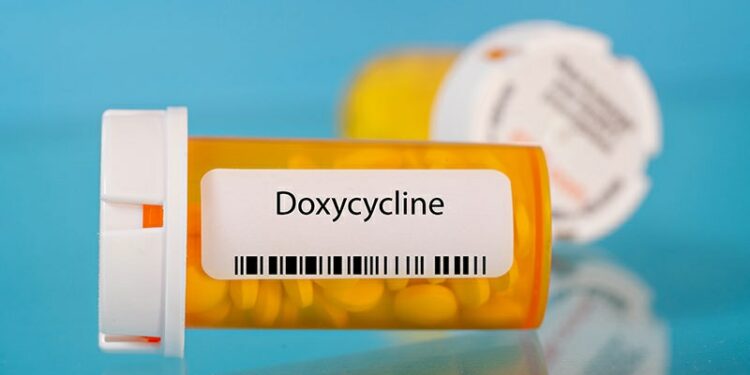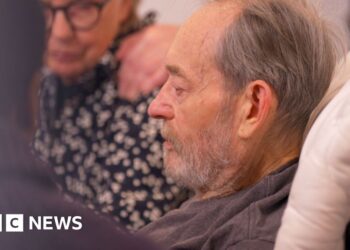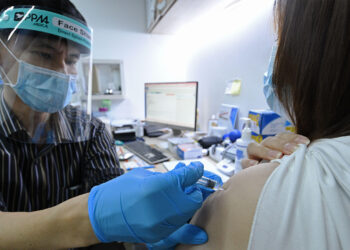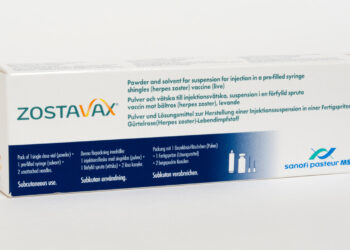Doxycycline postexposure prophylaxis (doxyPEP) has the potential to substantially reduce real-world population-level incidence of sexually transmitted infections (STIs), a study in JAMA Internal Medicine suggested.
This conclusion was reached by Stephanie E. Cohen, MD, medical director of the San Francisco City Clinic, Department of Public Health in San Francisco, and colleagues after examining STI trends in an urban population before (July 2021 to October 2022) and after (November 2022 to November 2023) the release of San Francisco’s citywide doxyPEP guidelines in October 2022.
DoxyPEP has proven effective for at-risk persons in clinical trials in the United States and France.
Study Details
Across the city there were 6694 cases of chlamydia, 9603 cases of gonorrhea, and 2121 cases of early syphilis in men who have sex with men (MSM) and transgender women during the analytic period.
Among the findings after doxyPEP implementation:
• For chlamydia, cases among MSM and transgender women decreased significantly compared with model projections: −6.58% per month (95% CI, −7.99% to −5.16%).
• Early syphilis cases dropped by −2.68% per month (95% CI, −3.75% to −1.60%).
• By the end of the 13-month period in November 2023, chlamydia and early syphilis cases decreased by −49.64% (95% CI, −59.05% to −38.06%) and −51.39% (95% CI, −58.21% to −43.46%), respectively, vs projected cases.
• Monthly gonorrhea cases increased compared with projections: 1.77% (95% CI, 0.87% – 2.67%).
The authors noted that preperiod gonorrhea cases among MSM and transgender women were already declining by −1.80% per month (95% CI, −2.32% to −1.27%). This trend stopped just as the doxyPEP guidelines were released and the number of gonorrhea cases per month stabilized. Because of this stabilization, compared with the preperiod, there was a net increase in gonorrhea cases of 1.77% per month. By the end of the 13-month postperiod, gonorrhea cases were higher by 25.55% (95% CI, −0.40% to 58.28%) compared with expectations if the preperiod trend had continued.
“DoxyPEP was effective at preventing gonorrhea in a clinical trial, but our population-level analysis in San Francisco showed it was not as effective at preventing gonorrhea as it was at preventing chlamydia and early syphilis,” Cohen told Medscape Medical News. “The lack of decline in gonorrhea may be related to tetracycline resistance in circulating strains of gonorrhea, and/or to differences in adherence compared with clinical trials.”
Cis Women and Other Groups
As for other at-risk populations, Cohen said, “At this time, evidence does not show doxyPEP being effective at preventing STIs for cis women, and the current guidance focuses on offering it to populations for whom studies have shown a benefit. There are additional ongoing studies of doxyPEP in cis women, and clinical guidance can and should evolve as more evidence about doxyPEP is produced.”
Commenting on the study but not involved in it, Hilary Reno, MD, PhD, fellow of the infectious diseases society of America and a professor of medicine in the Division of Infectious Disease at Washington University in St. Louis, noted that individuals who have had an STI in the past 12 months, are assigned male sex at birth, and have sex with people who are assigned male sex at birth have already demonstrated a lower risk for chlamydia, gonorrhea, and syphilis if they take doxyPEP.
“I hope we have studies identifying the same benefit in other people assigned male sex at birth and for all people assigned female sex at birth,” Reno said. “There is not a biologic reason why doxyPEP would not work for all people who might acquire an STI but having studies to demonstrate its benefit and implementation would go a long way to making this treatment more acceptable.”
Her city — St. Louis — however, has not seen similar doxyPEP decreases in STIs. “DoxyPEP has had a slower adoption here in the Midwest, but we are counseling patients about it regularly now,” she explained.
The Future
Longer-term evaluation of doxyPEP is needed to assess trends, monitor for adverse effects and drug resistance, and to evaluate how additional factors such as adherence, sexual behaviors, and antimicrobial resistance affect doxyPEP effectiveness, the study investigators said. They are planning future analyses to see if observed trends continue to align with citywide doxyPEP uptake and identify demographic disparities in doxyPEP uptake and STI incidence. Insurance coverage is likely a contributing factor in uptake.
Related DoxyPEP Plus HIV pre-exposure prophylaxis (PreP) Study
In a related cohort study also published in JAMA Internal Medicine, Michael W. Traeger, PhD, MSc, a research fellow in the Department of Population Medicine at Harvard Pilgrim Health Care Institute in Boston, examined prescription data to see if doxyPEP uptake is associated with real-life declines in STI incidence in insured individuals using HIV PreP.
Study Details
In this cohort study of 11,551 health-insured individuals (95.1% men) receiving HIV PreP in the Kaiser Permanente health system in Northern California, 2253 were dispensed doxyPEP. 1 in 5 patients received doxyPEP in the first year of availability.
Among doxyPEP recipients, quarterly STI positivity significantly declined from before to after starting doxyPEP by 79% for chlamydia, by 80% for syphilis, and by 12% for gonorrhea.
Overall, mean chlamydia positivity declined from 9.6% (95% CI, 9.0%-10.3%) before starting doxyPEP to 2.0% (95% CI, 1.5%-2.6%) afterward (rate ratio [RR], 0.21; 95% CI, 0.16-0.27; P P = .02) and urethral infection (RR, 0.56; 95% CI, 0.40-0.79; P = .001), but not pharyngeal infection.
Traeger’s group said the less pronounced drops in pharyngeal gonorrhea may reflect poor drug concentration of doxycycline in the mucosa and may pose an increased risk for resistance acquisition through horizontal transfer of resistance genes from commensal Neisseria species. “Monitoring for resistance in gonorrhea and other infections (eg, Staphylococcus aureus) among people using doxyPEP will be important as doxyPEP is scaled up,” they wrote.
Quarterly syphilis positivity decreased from 1.7% (95% CI, 1.4%-1.9%) before starting doxyPEP to 0.3% (95% CI, 0.2%-0.6%) afterward (RR, 0.20; 95% CI, 0.11-0.37; P
Reno said it was interesting that while chlamydia positivity decreased from 9.6%-2% and at all sites of infection, the decline in positivity was smaller for gonorrhea and no decline was observed in pharyngeal gonococcal positivity. “This is not unexpected but is a reminder that doxyPEP will likely have little impact on gonorrhea control and that our CDC-run gonorrhea programs must continue and be funded,” she said.
Reno noted that health insurance was more likely among those receiving treatment, “which should make us pay attention to the equitable availability of doxyPEP. We see disparities in STIs by race and we have an effective and desired method of preventing chlamydia and syphilis that is, however, not equitable.”
In an invited commentary, Jeanne M. Marrazzo, MD, MPH, of the National Institute of Allergy and Infectious Diseases in Bethesda, Maryland, and colleague noted that the United States is experiencing “stratospheric numbers” of new syphilis infections. With record-setting rates of congenital syphilis and ample evidence of severe sequelae, including neuroinvasion and ocular disease, there is a need for new tools to prevent and manage STIs. “Although investment in better diagnostic testing is gaining momentum, the pace of vaccine development has been slow, and that of new antibiotic development…has been glacial.” Marazzo and her associate wrote.
“These studies provide welcome evidence for the effectiveness of doxyPEP in preventing syphilis and chlamydia acquisition among an early-adopter group of males and transgender women engaged in care,” they wrote. They noted that in both studies doxyPEP uptake was high and similar to levels in clinical trials establishing the efficacy of this treatment for MSM.
Both studies, however, lacked sufficient detail about incident syphilis definition. “The reverse algorithm for syphilis diagnosis in high-prevalence populations is imperfect, and an effect on true incident infection may not be possible to ascertain,” they wrote. “Of course, the lack of reduction in gonorrhea, which has been seen in other studies, mandates an escalated urgency to pursue durable measures of protection, such as vaccines. In addition, the relative lack of effect on pharyngeal infections in the Traeger et al study raises concern about antimicrobial resistance, data on which for doxyPEP use are only beginning to emerge.”
Future studies could relate direct measurement of doxyPEP intake to efficacy, address durability, and assess any impact on trends in antimicrobial resistance. “Research to identify and test new and improved STI therapeutic and prevention options, especially vaccines and antimicrobials with safety and efficacy in all populations remains paramount,” the editorialists wrote.
The San Francisco study received no specific funding. Cohen reported nonfinancial support from Mayne Pharmaceutical, Cepheid Lab, and Hologic Lab during the conduct of the study as well as receiving grants from the Global Antibiotic Research & Development Partnership/Innovivo and Roche outside the submitted work. Coauthor Buchbinder reported receiving grants from Merck and GlaxoSmithKline as well as nonfinancial support from Gilead Sciences and ViiV Healthcare outside the submitted work. Havlir reported receiving grants from the National Institutes of Health and nonfinancial support from ViiV Healthcare outside the submitted work. Luetkemeyer reported nonfinancial support from Mayne Pharmaceutical, Cepheid Lab, and Hologic Lab during the conduct of the study as well as receiving grants from GlaxoSmithKline, Gilead, Cepheid, and Merck outside the submitted work. The Harvard-Kaiser Permanente research was supported by the National Institutes of Health. Traeger reported receiving grants, speaker honoraria, and travel costs from Gilead Sciences outside the submitted work. Coauthor Krakower reported receiving grants to his institution from Gilead Sciences and Merck outside the submitted work and developing medical education content on HIV prevention for Medscape Medical News and UpToDate. Young reported receiving grants from the National Institutes of Health during the conduct of the study as well as outside the submitted work. Marcus reported receiving grants from the National Institutes of Health during the conduct of the study. Reno and the editorial commentators had no relevant competing interests to disclose.
Diana Swift is an independent medical journalist based in Toronto.
Source link : https://www.medscape.com/viewarticle/doxycycline-postexposure-prophylaxis-cuts-stis-risk-groups-2025a10000se?src=rss
Author :
Publish date : 2025-01-14 07:06:34
Copyright for syndicated content belongs to the linked Source.














